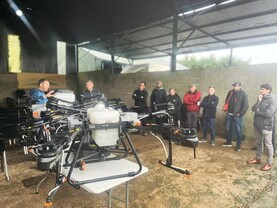Grass growth
Grass growth rates remain well below normal and as every week passes without a bounce in growth, the chances of that bounce ever coming diminishes. OK, this week was warmer than last, but those in the south and east are short of moisture. That’s not a problem in other places, but it’s a huge problem in soil moisture deficit areas where many farmers are already on a semi-winter diet.
Many have been feeding silage for weeks and if no improvement in grass growth comes, they could be on a full winter diet in four weeks’ time. This is really concerning, as silage stocks are already low in many farms. To avoid extreme stress next spring, it’s essential that action is taken now. The first step is to measure what silage is in the yard and then work out how much will be eaten by the animals.
According to the most recent Teagasc survey, over 20% of dairy farmers in the south have a deficit of 10% or more of winter feed. Solutions for filling this gap include buying silage now where it is available. Where silage is being fed now in order to slow down grass supply, one option is to switch this out for straights such as palm kernel.
This can be fed ad lib and cows milk well off it. I think that if extra concentrate is to be fed, it’s better to feed it now rather than in the dry period. The final option, which is a very real one now, is to offload non-surplus stock such as cull cows, beef cattle, surplus heifers, etc. A few less mouths around the place will make a big difference.
Clover
After disappointing farmers for most of the year, clover is only now appearing to deliver on grassland farms. One of the take-home messages from this grazing season has been how unreliable clover can be when there are weather and soil challenges. When clover is going well it’s great, but under present varieties and management knowledge some back-up form of nitrogen is essential, whether that’s bag fertiliser or slurry/soiled water.
Two issues; firstly the risk of bloat is elevated at this time of year, particularly as many farmers are grazing light covers. A group of stock to be particularly careful of is youngstock, especially if they are grazing lush swards of aftergrass with a high clover content. It’s harder to prevent bloat with this group of stock. Where the risk is very high, use 24 hour blocks, bloat oil and introduce some straw or silage.
Secondly, I was chatting to a man with lots of knowledge on soils, and he says that after all the rain over the last 12 months that a lot of lime will have been washed out of soils. Clover needs a high pH, so planning an application of lime across all paddocks could be a good investment this autumn.
Lameness
This week, Thomas Condon reports from a lameness event in Cork. The key point is that the majority of lameness is caused by hoof injuries. These injuries cause drops, ulcers and white line disease.
The main issues are rough roadways and collecting yards being too small, leading to cows being crowded. All of this pushing and shoving causes friction on the hoof, and that’s when problems happen.






 This is a subscriber-only article
This is a subscriber-only article










SHARING OPTIONS: